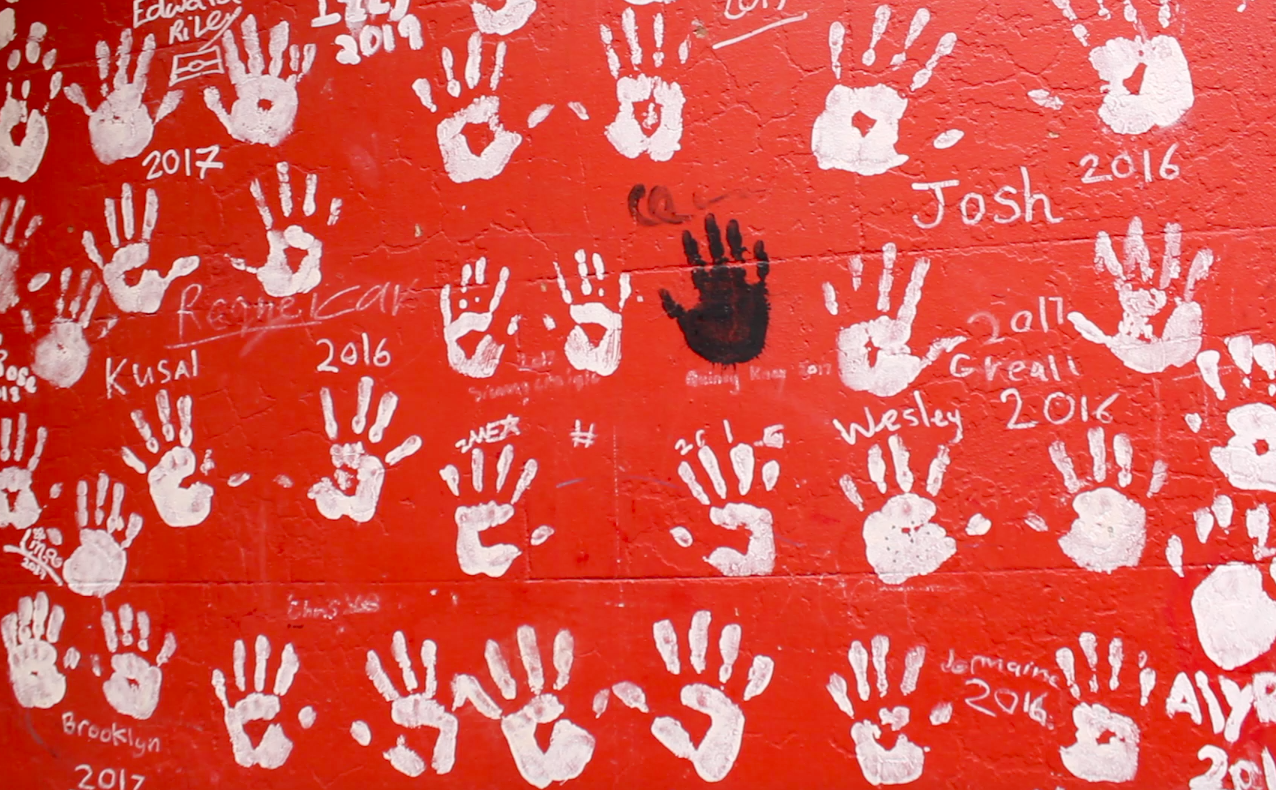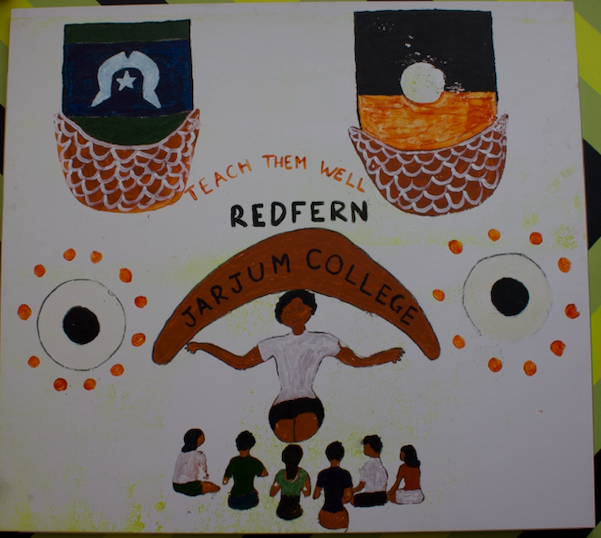
Originality:
Cultural education and development are critical for students in that they nurture their sense of identity and belonging. Redfern Jarjum School is a relatively new school, established in 2013, and I do not believe there is much widespread knowledge about the school, its aims, or its achievements. Although I have come across a few videos of similar nature, none detail the importance of specialized education for Indigenous children quite like mine. I aimed to focus on the importance of early cultural education and development for Indigenous children, in a way that encompassed aspects of the school’s uniqueness in what it achieves. I believe that the use of a video medium makes for a more personable interview, allowing the viewer to identify the people who are integral to creating the school’s sense of community.
Argument:
The driving argument behind my project is that there should be more of a focus on educational and community support for Indigenous children from a young age. As highlighted in my project, many Indigenous peoples have poor experiences with education institutions. This is reflected in their inability to trust mainstream schooling systems. Jarjum and other schools of the like create a space where Indigenous children feel seen and heard and their cultural needs are catered for. Mainstream schools and teachers are often unequipped to deal with the trauma Indigenous children carry. This trauma, often intergenerational, is not addressed by mainstream schools where they do not have the training or materials to do so. There is a need for more schools like Jarjum, where teachers are equipped with specialized trauma training and the ability to provide support beyond the school grounds.
Evidence:
I have predominately used primary sources, in the form of statistics and government reports to shape my argument. In so many ways, Australia continues to fail Indigenous peoples and importantly Indigenous children. The education gap between Indigenous and non-Indigenous school-aged students supports my argument that Indigenous children do not receive the cultural support they need for their educational development. In 2018 was a difference of 11% between Indigenous and non-Indigenous students’ attendance rates. Attendance rates for Indigenous students fell even further (around 14% difference), when students reach high school. The attendance gap for Indigenous students in regional areas is lower than students in urban areas, which highlights the need for widespread support. I also used short documentaries covering similar topics to not only gain insight into the medium of film but also to understand Indigenous voices and perspectives on the matter.
Themes:
Throughout my project, I develop themes of cultural consciousness and support. I also look at non-Indigenous peoples creating an inclusive and accessible learning environment for Indigenous peoples both at school and in other institutions. Acknowledging the lasting effects of colonialism such as dispossession and loss of identity creates room to provide support for these issues and address deep-rooted trauma. In the past, educational institutions have been one of the most prominent sites for the silencing of Indigenous voices and culture. For non-Indigenous people in the industry recognizing this can be uncomfortable, and it is often met with ignorance or denial. Jarjum and other culturally conscious institutions, attempt to eliminate further trauma that could be caused by a ‘white’ education, by fostering an environment that privileges the needs and concerns of Indigenous peoples.
Need:
Anyone interested in educating themselves about the importance of cultural consciousness in education, the workplace, and just in general will find my project of use. It could also benefit the school community, both Indigenous and non-Indigenous, in generating support for the school and further fundraisers. As the students attend the school at no cost and the teachers are required to undertake specialized trauma training, it is expensive to run. The school currently holds just under 30 children, therefore increasing awareness of the school’s need and how it benefits the community would allow the school to expand in numbers and resources.
Significance:
Ultimately, my goal is to generate awareness for the need for cultural support in schools. My project can also be used as a tool for parents or other actors in the community to understand more about Jarjum’s role in Indigenous education. In the future, my project could also be used as ‘historical’ documentation. In ten years’, time the school can look back at my video and see where and how the school was running in its first five years. It might also be used by independent schools where many students from Jarjum attend high school on bursaries or scholarships, to strengthen connections where more funding and support may be provided for Indigenous students.
Creativity:

My project is creative in the sense that schools primarily use their website to house their information. Creating a video provided a space for my interviewees to speak in-depth on questions that otherwise might have gone unanswered. Transcribing their responses and adding them to their website was a plan I was initially looking towards. However, I think having an alternative platform to promote the school’s achievements is beneficial. At times creating a video was difficult. I am completely new to the industry, so it was a huge learning curve for me.
Presentation:
I am presenting my project in the form of a short documentary, and it features two interviews with staff members. I wanted to include Indigenous voices in my project, however, I unfortunately was not able to get in touch with any Indigenous community members or teachers from the school. Having no previous connections to the Indigenous community made it difficult, and I was conscious of not forcing anything upon anyone. It had to be completely voluntary, and I lacked time to build the connections that would have been useful in acquiring an Indigenous perspective. Although this does affect my project in the sense that non-Indigenous people are speaking on Indigenous matters, I tried to focus my questions on the school and not cross any cultural boundaries or have my non-Indigenous interviewees speak on matters that would be inappropriate or insensitive to the Indigenous community. The use of video interviews, however, I think helped to put a face to the school and allows the viewer to form a connection to the people I have interviewed. My decision for the presentation of my project also stemmed from oral history, a significant part of Indigenous culture. I wanted to tie in this aspect to my project and a video was the best way to do so.
Accessibility:
After submitting my assessment, it is up to the school to choose whether they want to take it further. I am not marketing it as such, I don’t think that is necessary for the type of project I have undertaken, but they may wish to use it as a tool to strengthen community connections or for parents to understand more about their child’s education.
Sustainability:
Beyond the life of this unit, I will remain in touch with Jarjum. Ultimately, I would like to upload my project to YouTube with the permission of the school, in hopes it will raise awareness and support for small independent schools that are aiming to close the gap in the education system.

